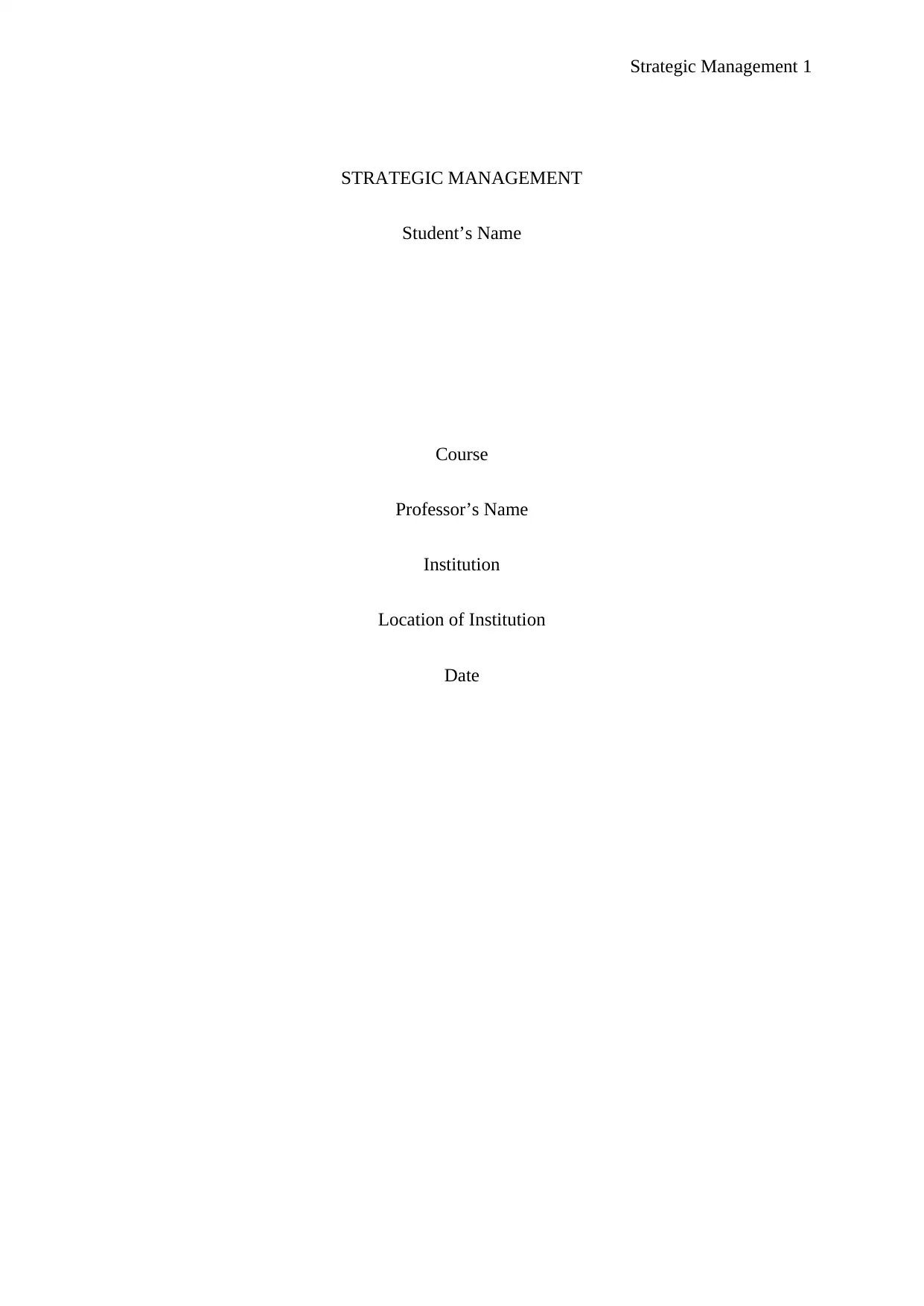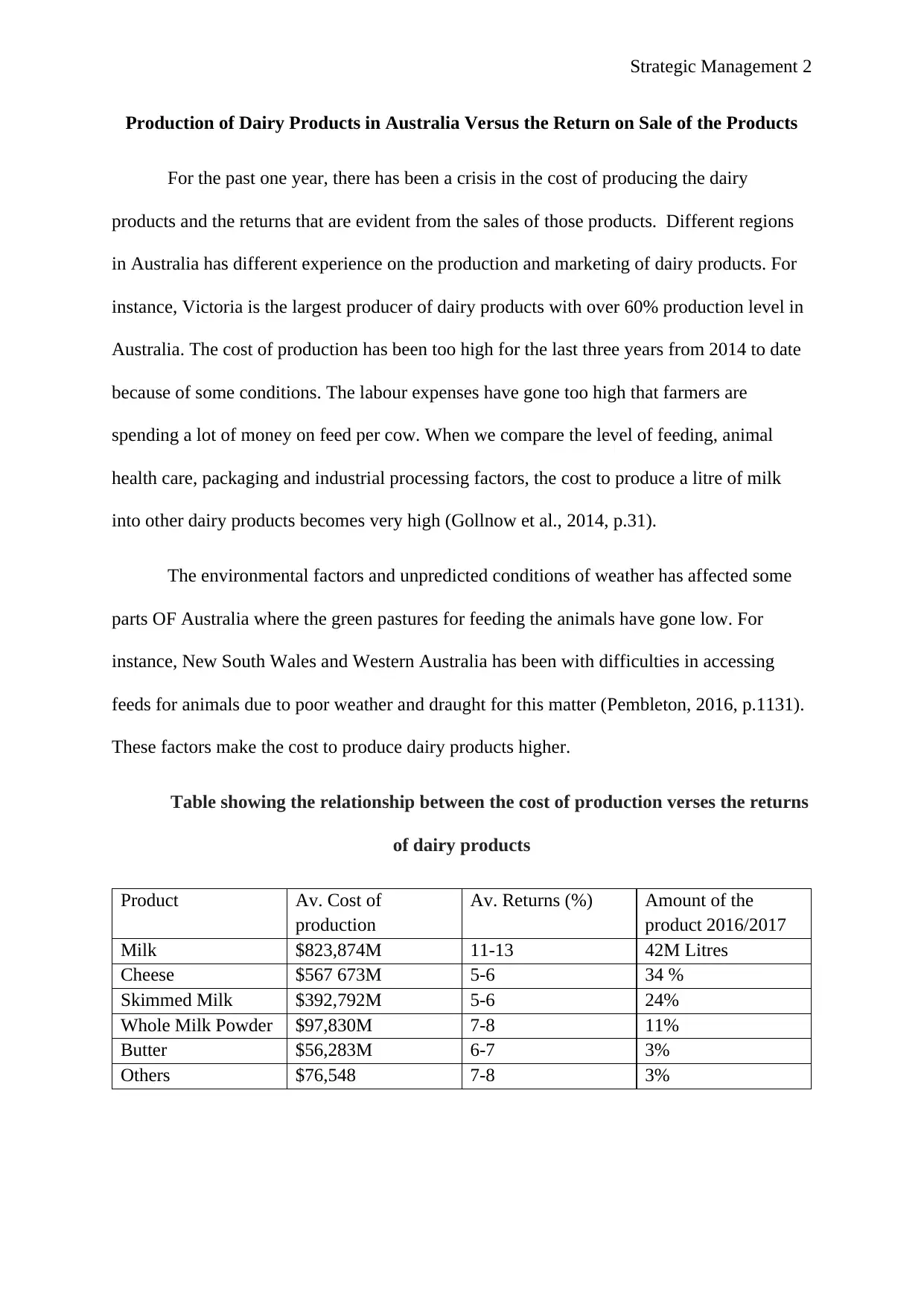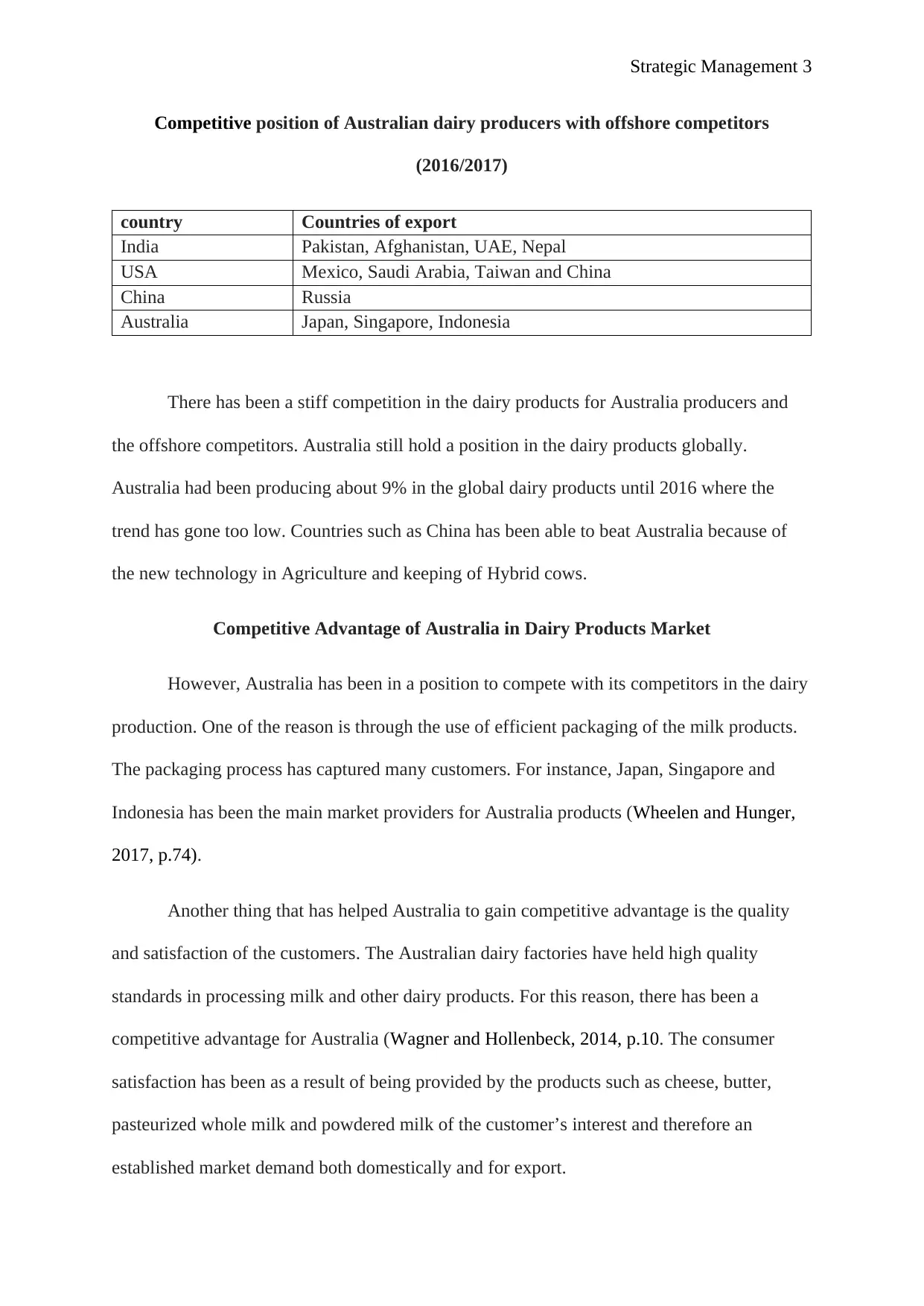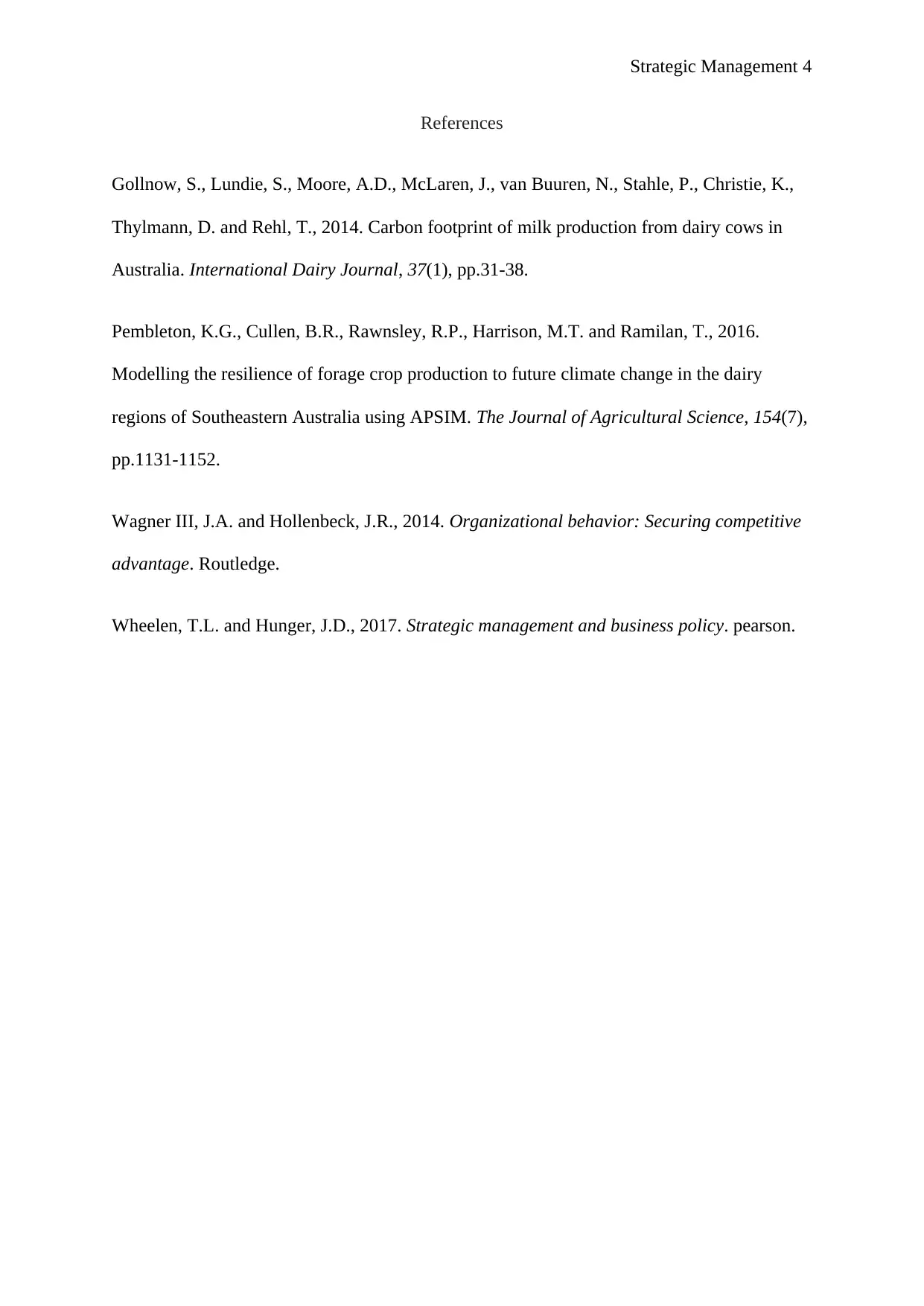Strategic Analysis: Dairy Production Costs vs. Returns in Australia
VerifiedAdded on 2020/02/24
|4
|782
|39
Report
AI Summary
This report examines the financial performance of the Australian dairy industry, focusing on the relationship between production costs and sales returns over the past year. It highlights regional variations in production, with Victoria being the largest producer. The analysis identifies rising labor expenses, feed costs, and environmental factors as key drivers of increased production costs. The report presents a table comparing production costs and returns for various dairy products like milk, cheese, and skimmed milk. It also assesses the competitive position of Australian dairy producers against global competitors, such as China. Despite facing challenges, the report emphasizes Australia's competitive advantages, including efficient packaging and high-quality standards, which have helped maintain market share in countries like Japan, Singapore, and Indonesia. The study concludes by highlighting the importance of customer satisfaction and the demand for diverse dairy products in both domestic and export markets.
1 out of 4








![[object Object]](/_next/static/media/star-bottom.7253800d.svg)